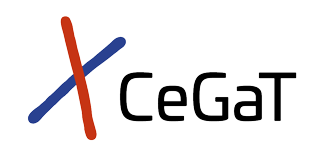Neurodegeneration is a progressive and irreversible process resulting in a gradual loss of neuronal structure and function. This process occurs during normal aging, but many neurodegenerative diseases accelerate it. Usually, neurodegenerative diseases manifest at later ages, thus, getting more and more important due to the increasing life expectancy of society. Examples of disorders typically manifesting in middle and older adult ages are Alzheimer’s and Parkinson’s disease, frontotemporal dementia, or Huntington’s disease. Neurodegenerative disorders manifest less frequently in children and adolescents, where they mainly affect the central nervous system. The Diagnostic Panel for Neurodegenerative Diseases includes 392 genes and provides information on the exact nature of the disease and intrafamilial recurrence risk.
The Diagnostic Panel for Neurodegenerative Diseases is based on our proprietary, high-quality ExomeXtra® enrichment, covering all protein-coding regions as well as intronic and intergenic variants described as disease-relevant in the databases HGMD and ClinVar. In addition, the ExomeXtra® enrichment enables a genome-wide CNV calling with similar performance to array CGH. It thus provides the ideal basis for genetic diagnostics.
Are you insured in Germany? Our colleagues at the Zentrum für Humangenetik Tübingen will gladly support you!
What We Offer with the Panel for Neurodegenerative Diseases
Our Promise to You
Your Benefits
It is possible to request single or multiple predefined gene sets. In addition to the complete analysis of the genes of the requested gene set, we extend the analysis by additional genes for differential diagnosis. We report variants of unknown significance (ACMG class 3) and pathogenic and probably pathogenic variants (ACMG classes 4 and 5) for the primarily ordered gene set. For the genes included due to differential diagnosis, we restrict the reporting to pathogenic and probably pathogenic variants (ACMG classes 4 and 5), which could be related to the indication of the person seeking advice.
The Diagnostic Panel for Neurodegenerative Diseases is based on CeGaT’s ExomeXtra® enrichment. This allows, without additional sequencing, phenotypically eligible gene sets of other CeGaT panels or single genes to be additionally ordered. If you would like to assemble an individual panel, please feel free to contact us. We will be happy to support you.
In addition to the primary diagnostic assignment, the assessment of ACMG genes and pharmacogenetic profiling may also be ordered.
Method
The enrichment of the coding regions and the adjacent intronic regions is performed using an in-solution hybridization technology. The selection of the targeted regions and the design of the enrichment baits is performed in-house. High-throughput sequencing is performed on our Illumina platforms. Bioinformatic processing of the data is achieved using an in-house computer cluster.
Following data processing, our team of scientists and specialists in human genetics analyze the data and issue a medical report.
Sample Report
General Information
Material
- 1-2 ml EDTA blood (recommended sample type) or
- 1-2 µg genomic DNA
- Order Form with declaration of consent
Here you can find more information on how to ship your sample safely.
Costs
The prices for our human genetic diagnostics depend on the size of the selected diagnostic panel and the selected gene sets. All prices include sequencing, bioinformatic analysis, and issuing of a medical report by our team of experts in human genetic diagnostics.
Gene Sets – Neurodegenerative Diseases
Parkinson’s Disease, Autosomal Recessive (NDD02, 11 Genes)
ATP13A2, DNAJC6, FBXO7, PARK7, PINK1, PLA2G6, PRKN, SLC30A10, SLC6A3, SYNJ1, VPS13C
Parkinson’s Disease (NDD05, 31 Genes)
ATP13A2, ATP1A3, C19orf12, CHCHD2, DCTN1, DNAJC12, DNAJC6, FBXO7, FTL, GBA, GCH1, GRN, LRRK2, MAPT, PANK2, PARK7, PINK1, PLA2G6, PRKN, PRKRA, PSAP, SLC30A10, SLC39A14, SLC6A3, SNCA, SPR, SYNJ1, TAF1, TH, VPS13C, VPS35
Dystonia Plus Syndrome (NDD07, 15 Genes)
ANO3, ATP1A3, BCAP31, DRD2, ECHS1, FTL, GCH1, KIF1C, PRKRA, SGCE, SLC30A10, SPR, TH, TUBB4A, VPS16
Paroxysmal Movement Disorders (NDD08, 15 Genes)
ADCY5, ATP1A2, ATP1A3, CACNA1A, GCH1, KCNA1, KCNMA1, NOTCH3, PNKD, POLG, PRKN, PRRT2, SCN1A, SCN8A, SLC2A1
Dystonia (NDD10, 61 Genes)
ADAR, ADCY5, AFG3L2, ANO3, AOPEP, APTX, ATM, ATP1A2, ATP1A3, ATP7B, BCAP31, C19orf12, CACNA1A, CHMP2B, COASY, DCAF17, DDC, DLAT, DNAJC12, DRD2, ECHS1, EIF2AK2, FA2H, FASTKD2, FBXO7, FTL, GAMT, GCDH, GCH1, GNAL, GNAO1, HPCA, IRF2BPL, KCNMA1, KCTD17, KIF1C, KMT2B, MECR, NKX2-1, PANK2, PLA2G6, PRKN, PRKRA, PRRT2, SCN8A, SGCE, SLC2A1, SLC30A10, SLC39A14, SLC6A3, SPATA5L1, SPR, TAF1, TH, THAP1, TOR1A, TUBB4A, VAC14, VPS13A, VPS16, YY1
Intracerebral Calcification (NDD24, 31 Genes)
ADAR, AP1S2, COL4A1, CTC1, CYP2U1, FARSA, FARSB, IFIH1, JAM2, JAM3, LSM11, MYORG, NRROS, OCLN, PDGFB, PDGFRB, RNASEH2A, RNASEH2B, RNASEH2C, RNASET2, RNU7-1, SAMHD1, SLC20A2, SNORD118, STN1, TINF2, TREM2, TREX1, TYROBP, USP18, XPR1
Choreatic Movement Disorders (NDD13, 17 Genes)
ADCY5, ATM, CAMK4, FRRS1L, FTL, GM2A, GNAO1, NKX2-1, OPA3, PDE10A, PDE2A, PDHA1, PRNP, RNF216, VAMP2, VPS13A, XK
HTT, JPH3 repeat analyses is part of our standard procedure. Please note on the form, if you do not require HTT, JPH3 repeat analyses.
Spinocerebellar Ataxia, Autosomal Dominant (NDD25, 22 Genes)
AFG3L2, CACNA1A, CACNA1G, DAB1, ELOVL4, ELOVL5, FAT2, FGF14, GRM1, ITPR1, KCNC3, KCND3, NOP56, PDYN, PPP2R2B, PRKCG, PUM1, SPTBN2, STUB1, TGM6, TMEM240, TTBK2
SCA1, SCA2, SCA3, SCA6, SCA7, SCA17 repeat analyses is part of our standard procedure. Please note on the form, if you do not require SCA1, SCA2, SCA3, SCA6, SCA7, SCA17 repeat analyses.
Cerebellar Ataxia, Autosomal Recessive, Non-syndromic (NDD26, 30 Genes)
ANO10, APTX, ATG7, ATM, COA7, COQ8A, CWF19L1, EXOSC5, GDAP2, GRID2, GRM1, PITRM1, PMPCA, RUBCN, SCYL1, SETX, SLC9A1, SNX14, SPTBN2, STUB1, SYNE1, TDP2, THG1L, TPP1, TTPA, TWNK, VPS13D, VPS41, WWOX, XRCC1
FXN repeat analysis is part of our standard procedure. Please note on the form, if you do not require a FXN repeat analysis.
Hereditary Ataxia (NDD14, 110 Genes)
ABCB7, ABHD12, AFG3L2, ANO10, APTX, ATCAY, ATG7, ATM, ATP1A3, ATP8A2, CA8, CACNA1A, CACNA1G, CACNB4, CAMTA1, CAPN1, LCN2, CLN6, COA7, COQ8A, CP, CTBP1, CWF19L1, CYP27A1, DAB1, DARS2, DNAJC5, DNMT1, EIF2B1, EIF2B2, EIF2B3, EIF2B4, EIF2B5, ELOVL4, ELOVL5, EPM2A, XOSC5, FAT2, FGF14, FLVCR1, FXN, GDAP2, GFAP, GOSR2, GRID2, GRM1, HEXA, HEXB, ITPR1, KCNA1, KCNC3, KCND3, KCNJ10, KCNN2, KIF1C, MARS2, MRE11, HLRC1, NKX6-2, NOP56, NPC1, NPC2, PDYN, PIK3R5, PITRM1, PLA2G6, PMPCA, PNKP, PNPLA6, POLG, POLR3A, POU4F1, PPP2R2B, PRICKLE1, PRKCG, PRRT2, PUM1, RNF170, RNF216, RUBCN, SACS, SCN2A, SCYL1, SETX, SIL1, SLC1A3, SLC2A1, SLC52A2, SLC52A3, SLC9A1, SNX14, SPG7, SPTBN2, STUB1, SYNE1, TDP2, GM6, THG1L, TMEM240, TPP1, TTBK2, TTPA, TWNK, VAMP1, VLDLR, VPS13D, VPS41, WDR81, WWOX, XRCC1
SCA1, SCA2, SCA3, SCA6, SCA7, SCA17 repeat analyses and of FXN repeat analysis is part of our standard procedure. Please note on the form, if you do not require SCA1, SCA2, SCA3, SCA6, SCA7, SCA17 repeat analyses and a FXN repeat analysis.
Dementia (NDD17, 18 Genes)
APP, CHCHD10, CHMP2B, CSF1R, GRN, ITM2B, MAPT, NOTCH3, OPTN, PRNP, PSEN1, PSEN2, SQSTM1, TARDBP, TBK1, TREM2, UBQLN2, VCP
C9ORF72 repeat analysis is part of our standard procedure. Please note on the form, if you do not require a C9ORF72 repeat analysis.
Amyotrophic Lateral Sclerosis (ALS) (NDD18, 25 Genes)
ALS2, ANG, CHCHD10, CHMP2B, DCTN1, FIG4, FUS, GLT8D1, HNRNPA1, KIF5A, MATR3, OPTN, PFN1, SETX, SIGMAR1, SOD1, SPG11, SQSTM1, TARDBP, TBK1, TIA1, TUBA4A, UBQLN2, VAPB, VCP
C9ORF72 repeat analysis is part of our standard procedure. Please note on the form, if you do not require a C9ORF72 repeat analysis.
Hereditary Spastic Paraplegia (HSP), Autosomal Dominant (NDD27, 14 Genes)
ALDH18A1, ATL1, BSCL2, HSPD1, KIDINS220, KIF1A, KIF5A, NIPA1, REEP1, RTN2, SLC33A1, SPAST, UBAP1, WASHC5
Hereditary Spastic Paraplegia (HSP), Autosomal Recessive (NDD28, 42 Genes)
AFG3L2, AIMP1, ALDH18A1, ALS2, AP4B1, AP4E1, AP4M1, AP4S1, AP5Z1, ATP13A2, B4GALNT1, CAPN1, CYP2U1, CYP7B1, DDHD1, DHD2, DSTYK, ENTPD1, ERLIN1, ERLIN2, FA2H, FARS2, GBA2, HACE1, HPDL, KIF1A, KIF1C, KLC2, MAG, MTRFR, NT5C2, PCYT2, PNPLA6, RNF170, SELENOI, SPART, SPG11, SPG21, SPG7, TFG, UCHL1, ZFYVE26
Hereditary Spastic Paraplegia (HSP) (NDD20, 71 Genes)
ABCD1, ABHD16A, AFG3L2, AIMP1, ALDH18A1, ALS2, AP4B1, AP4E1, AP4M1, AP4S1, AP5Z1, ARG1, ATL1, ATP13A2, B4GALNT1, SCL2, CAPN1, CYP2U1, CYP7B1, DARS1, DDHD1, DDHD2, DSTYK, ENTPD1, ERLIN1, ERLIN2, FA2H, FARS2, GALC, GBA2, GCH1, HACE1, HPDL, HSPD1, KCNA2, KDM5C, KIDINS220, KIF1A, KIF1C, KIF5A, KLC2, L1CAM, MAG, MTRFR, NIPA1, NKX6-2, NT5C2, PCYT2, PLP1, PNPLA6, REEP1, RNF170, RTN2, SACS, SELENOI, LC16A2, SLC33A1, SPART, SPAST, SPG11, SPG21, SPG7, TECPR2, TFG, TNR, TUBB4A, UBAP1, UCHL1, WASHC5, WDR45B, ZFYVE26
Cerebral Small Vessel Disease (NDD23, 9 Genes)
APP, COL4A1, COL4A2, COLGALT1, FOXC1, GLA, HTRA1, NOTCH3, TREX1
Neuronal Ceroid Lipofuscinosis (NCL) (NDD21, 13 Genes)
ATP13A2, CLN3, CLN5, CLN6, CLN8, CTSD, CTSF, DNAJC5, GRN, KCTD7, MFSD8, PPT1, TPP1
Neurodegeneration with Brain Iron Accumulation (NBIA) (NDD11, 10 Genes)
ATP13A2, C19ORF12, COASY, CP, DCAF17, FA2H, FTL, PANK2, PLA2G6, WDR45
Leukodystrophy and Leukoencephalopathy (NDD29, 86 Genes)
AARS1, AARS2, ABCD1, ACBD5, ACOX1, ADAR, AIMP1, AIMP2, ALDH3A2, ARSA, ASPA, BCAP31, CLCN2, CLDN11, CNP, CSF1R, CTC1, CYP27A1, DARS1, DARS2, DEGS1, EARS2, EIF2AK2, EIF2B1, EIF2B2, EIF2B3, EIF2B4, EIF2B5, EPRS1, FAM126A, GALC, GAN, GBE1, GFAP, GJC2, HEPACAM, HIKESHI, HSD17B4, HSPD1, HTRA1, IFIH1, KARS1, L2HGDH, LMNB1, LSM11, MLC1, NAXD, NAXE, NKX6-2, NOTCH3, OCLN, PLAA, PLEKHG2, PLP1, POLR1C, POLR3A, POLR3B, POLR3K, PSAP, PYCR2, RAB11B, RARS1, RNASEH2A, RNASEH2B, RNASEH2C, RNASET2, RNU7-1, SAMHD1, SCP2, SLC16A2, SLC17A5, SLC25A12, SNORD118, SOX10, STAT2, STN1, SUMF1, TMEM106B, TMEM63A, TREM2, TREX1, TUBB4A, TYROBP, UFM1, VPS11, ZNHIT3
Gene Sets – Additional Analyses (Additional Fees May Apply)
HLA-Typing (HLA01)
I would like to receive an additional report stating the HLA alleles (HLA class I (Gene A, B, C) and HLA class II (Gene DPA1, DPB1, DQA1, DQB1, DRB1, DRB3, DRB4, DRB5)).
ACMG Genes Diagnostics for Adults (73 Genes)/ For Minors (64 Genes)
ACTA2, ACTC1, ACVRL1, APC, APOB, ATP7B, BMPR1A, BRCA1*, BRCA2*, BTD, CACNA1S, CASQ2, COL3A1, DSC2, DSG2, DSP, ENG, FBN1, FLNC, GAA, GLA, HFE*, HNF1A, KCNH2, KCNQ1, LDLR, LMNA, MAX, MEN1, MLH1*, MSH2*, MSH6*, MUTYH*, MYBPC3, MYH11, MYH7, MYL2, MYL3, NF2, OTC, PALB2*, PCSK9, PKP2, PMS2*, PRKAG2, PTEN, RB1, RET, RPE65, RYR1, RYR2, SCN5A, SDHAF2, SDHB, SDHC, SDHD, SMAD3, SMAD4, STK11, TGFBR1, TGFBR2, TMEM127, TMEM43, TNNI3, TNNT2, TP53, TPM1, TRDN, TSC1, TSC2, VHL, WT1
I would like to be informed of relevant alterations within the above listed genes that have been selected by the American College of Medical Genetics and Genomics (ACMG). The analysis is performed according to current guidelines (ACMG SF v3.2; Miller et al., 2023, PMID: 37347242) and restricted to the sequence data. Re-sequencing of regions with poor sequence coverage will not typically be performed. A negative “ACMG genes” report cannot be used to rule out (genetic) disease risk. Additional fees may apply.
* According to German legislation, predictive tests for minors may not be performed for diseases which have an onset in adulthood. Therefore, the genes BRCA1, BRCA2, HFE, MLH1, MSH2, MSH6, MUTYH, PALB2 and PMS2 will not be analyzed for minors, unless the phenotypic spectrum is within the scope of the primary medical indication of the patient.
Order Form (pdf)
Pharmacogenetics (PGX) (22 Genes)
I would like to receive an additional report analyzing known variants in 22 genes that are involved in the metabolism of pharmaceutical products.
ABCG2, CACNA1S, CYP2B6, CYP2C19, CYP2C9, CYP2D6, CYP3A4, CYP3A5, CYP4F2, DPYD, G6PD, HLA-A, HLA-B, IFNL3, MT-RNR1, NUDT15, POR, RYR1, SLCO1B1, TPMT, UGT1A1, VKORC1
Gene Directory – Panel for Neurodegenerative Diseases
AARS1, AARS2, ABCB7, ABCD1, ABHD12, ACOX1, ADAR, ADCY5, ADPRHL2, AFG3L2, AIMP1, AIMP2, ALDH18A1, ALDH3A2, ALS2, ANG, ANO10, ANO3, AP4B1, AP4E1, AP4M1, AP4S1, AP5Z1, APOPT1, APP, APTX, ARL6IP1, ARSA, ASPA, ATCAY, ATL1, ATM, ATP13A2, ATP1A2, ATP1A3, ATP7B, ATP8A2, B4GALNT1, BCAP31, BOLA3, BSCL2, C12orf65, C19orf12, CA2, CA8, CACNA1A, CACNA1G, CACNB4, CAMTA1, CAPN1, CARS2, CCDC88C, CHCHD10, CHCHD2, CHMP2B, CIZ1, CLCN2, CLN3, CLN5, CLN6, CLN8, COA7, COASY, COL4A1, COL4A2, COL6A3, COLGALT1, COQ8A, COX10, COX15, COX20, COX6B1, CP, CPT1C, CSF1R, CTBP1, CTC1, CTSA, CTSD, CTSF, CWF19L1, CYP27A1, CYP2U1, CYP7B1, DARS1, DARS2, DCAF17, DCTN1, DDHD1, DDHD2, DNAJC12, DNAJC5, DNAJC6, DNMT1, DSTYK, EARS2, EIF2B1, EIF2B2, EIF2B3, EIF2B4, EIF2B5, ELOVL4, ELOVL5, EMC1, EPRS1, ERCC6, ERCC8, ERLIN2, FA2H, FAM126A, FARS2, FBXO7, FGF14, FIG4, FKRP, FKTN, FLVCR1, FOLR1, FOXC1, FOXRED1, FRRS1L, FTL, FUCA1, FUS, FXN, GALC, GAN, GBA, GBA2, GBE1, GCDH, GCH1, GEMIN4, GFAP, GFM1, GJC2, GLA, GLB1, GLRX5, GMPPB, GNAL, GNAO1, GOSR2, GRID2, GRM1, GRN, HEPACAM, HEXA, HEXB, HIKESHI, HNRNPA1, HPCA, HSD17B4, HSPD1, HTRA1, IBA57, IDS, IFIH1, IRF2BPL, ISCA1, ISCA2, ITM2B, ITPR1, KARS1, KCNA1, KCNC3, KCND3, KCNJ10, KCNMA1, KCNT1, KCTD7, KIDINS220, KIF1A, KIF1C, KIF5A, KMT2B, L1CAM, L2HGDH, LAMA2, LARGE1, LIPT2, LMNB1, LRPPRC, LRRK2, LYRM7, MAG, MAPT, MARS2, MATR3, MCOLN1, MECR, MFSD8, MLC1, MPV17, MRE11, MTFMT, MTHFS, MTTP, MYORG, NACC1, NARS2, NAXE, NDUFS1, NDUFV1, NEU1, NFU1, NIPA1, NKX2-1, NKX6-2, NOTCH3, NPC1, NPC2, NT5C2, NUBPL, OCLN, OPTN, PANK2, PARK7, PC, PDE10A, PDGFB, PDGFRB, PDYN, PET100, PEX1, PEX10, PEX11B, PEX12, PEX13, PEX14, PEX16, PEX19, PEX2, PEX26, PEX3, PEX5, PEX6, PEX7, PFN1, PHGDH, PHYH, PINK1, PLA2G6, PLAA, PLEKHG2, PLP1, PMPCA, PMPCB, PNKD, PNKP, PNPLA6, POLG, POLR1C, POLR3A, POLR3B, POLR3K, POMGNT1, POMT1, POMT2, PPT1, PRICKLE1, PRKCG, PRKN, PRKRA, PRNP, PRRT2, PSAP, PSAT1, PSEN1, PSEN2, PUM1, PYCR2, QARS1, RAB11B, RARS1, RARS2, REEP1, REEP2, RNASEH2A, RNASEH2B, RNASEH2C, RNASET2, RNF170, RNF216, RTN2, SACS, SAMHD1, SCN1A, SCN2A, SCN8A, SCP2, SCYL1, SDHA, SDHAF1, SETX, SGCE, SIGMAR1, SIL1, SLC16A2, SLC17A5, SLC19A3, SLC1A3, SLC1A4, SLC20A2, SLC25A12, SLC2A1, SLC30A10, SLC33A1, SLC39A14, SLC6A3, SNCA, SNORD118, SNX14, SOD1, SOX10, SPART, SPAST, SPG11, SPG21, SPG7, SPR, SPTAN1, SPTBN2, SQSTM1, STN1, STUB1, SUMF1, SURF1, SYNE1, SYNJ1, TACO1, TARDBP, TARS2, TBCD, TBCK, TBK1, TDP1, TDP2, TECPR2, TFG, TGFB1, TGM6, TH, THAP1, TMEM106B, TMEM240, TOR1A, TPP1, TRAPPC12, TRAPPC6B, TRAPPC9, TREM2, TREX1, TTBK2, TTC19, TTPA, TUBA4A, TUBB4A, TUFM, TWNK, TYMP, TYROBP, UBAP1, UBQLN2, UBTF, UCHL1, UFC1, UFM1, VAC14, VAMP1, VAPB, VARS1, VARS2, VCP, VLDLR, VPS11, VPS13A, VPS13C, VPS13D, VPS35, WARS2, WASHC5, WDR45, WDR45B, WDR81, WFS1, WWOX, XK, XPR1, XRCC1, ZFYVE26, ZNHIT3
Additional Services
HLA-Typing (HLA01)
HLA class I (Gene A, B, C) and HLA class II (Gene DPA1, DPB1, DQA1, DQB1, DRB1, DRB3, DRB4, DRB5)
ACMG Genes
Genetic variation may sometimes be identified, which does not fit within the scope of the requested genetic analysis (so-called secondary findings). The reporting of these variants is limited to pathogenic alterations (ACMG classes 4 and 5) within selected genes, for which a treatment or course of action exists for you or your family (according to the current guidelines of the American College of Medical Genetics and Genomics).
Pharmacogenetics
Pharmacogenetic analysis detects genetic changes that affect the effectiveness of drugs. Genetic variants that affect proteins responsible for the metabolism of substances can significantly change their tolerance and efficacy. These drugs include, among others, antidepressants, pain relievers, neuroleptics, chemotherapeutics, AIDS drugs, thrombosis drugs, anesthetics, beta-blockers, or statins.
The reduced activity of a specific enzyme can lead to an increased drug level in the standard dosage, which is often associated with undesirable side effects. With drugs that are only activated by metabolism, the therapeutic effect can be completely absent. Likewise, due to the resulting increased rate of degradation of the medicinal substance, an increased enzyme activity leads to inadequate effectiveness of the therapy.
The pharmacogenetics option analyzes known variants in twenty-two genes involved in the metabolism of drugs. If specific gene variants occur, the treating doctor can adapt the therapy individually. The pharmacogenetic analysis can minimize serious side effects and helps to avoid failure of the treatment.
Contact Us
Do you have a question, or are you interested in our service?
Diagnostic Support
We will assist you in selecting the diagnostic strategy – for each patient.




